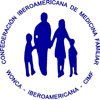A pragmatic method for comparing the human resource capacity of health facilities
Resumo
Objetivos: Africa Health Placements’ Capacity Assessment Model aims to determine the relative need of health facilities for different types of human resources assistance, enabling prioritization by management. A pilot of this model was conducted in a primarily rural district in South Africa.
Metodologia ou Descrição da Experiência: Using a structured interview tool, health facility staff numbers, patient loads, patient profiles, services offered, and supporting qualitative and quantitative data were collected from 2 district hospitals, 5 community health centers and 22 clinics in the district. Quantitative data was used to calculate the minutes that each health professional cadre had available to spend with one patient. The model accounted for the distribution of patients in terms of age and health stability, and the services offered by the facility. It was expected that there would be evident differences in this ‘minutes per duty’ figure between facilities, enabling informed human resource distribution decisions.
Resultados: In assessing human resources capacity, of the two hospitals in the district, one was identified as having fewer ‘doctor minutes’ (11.7 minutes) available per patient in need of medical officer intervention, with the second facility having 14.0 ‘doctor minutes’ available per patient. The highest available ‘doctor minutes’ per patient were 15.5 minutes at a community health center. Of the 29 facilities (hospitals, clinics and community health centers) a clinic was found to have the lowest ‘professional nurse minutes’ (7.0 minutes) available per patient. The highest number of ‘professional nurse minutes’ available was 134.3 minutes per patient at a community health center.
Conclusão ou Hipóteses: Africa Health Placement’s Capacity Assessment Model has been found to be helpful to staffing allocation and training decisions based on relative need, irrespective of the norms that are selected using the Workload Indicators of Staffing Need Model (WHO) employed by South Africa’s Department of Health. The district management used the data to inform their human resources planning for 2014.
Palavras-chave
Texto completo:
PDF (English)Apontamentos
- Não há apontamentos.
Este periódico é de responsabilidade das associações:
Apoio institucional:







